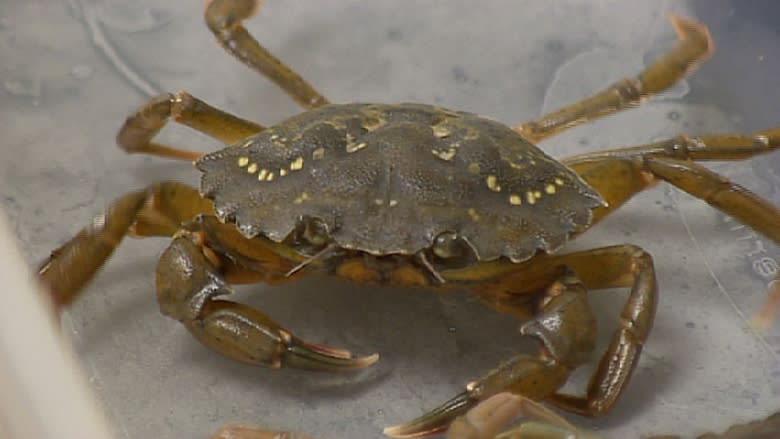Green crab shell secret cracked
Researchers at UPEI say they've made an important discovery which could help in the fight against an invasive species on Canada's east coast.
It could also provide fishermen with a new source of revenue, and restaurants with a signature dish.
Green crabs are an invasive species from Europe. You can find them up and down the Atlantic coast. They're spreading, feeding on profitable native shellfish and destroying valuable eel grass habitat.
"We've done some lab experiments which demonstrate that show green crab are able to eat 30 small oysters per day," said researcher Luke Poirier.
"They can also do damage to soft shell clams and to mussels."
This spring Fisheries and Oceans Canada offered up commercial green crab licenses to P.E.I. fishermen, but so far there have been no takers because there's no market.
The trouble is green crab are small, and it is difficult to get the meat out of the shell. Researcher Sophie St-Hilaire is looking to how Europeans deal with the crustaceans.
"The Italians in Venice, they've been harvesting the green crab as a soft shell crab for hundreds of years," said St-Hilaire.
Fried and eaten whole in the shell, green crabs are a delicacy in Italy. The raw product can sell for $40 a pound.
Catching crabs when they are vulnerable
But for that to work the crabs have to be harvested during or just before moulting, when the shells are soft, and researchers have not been able to work out when North American green crabs do that. That's the mystery St-Hilaire believes the UPEI researchers have solved.
They believe the crabs are prompted to moult based based on water temperature, and that the moulting is somehow co-ordinated so they all cast their shells at the same time. One theory is the co-ordination is a defence mechanism. If they didn't moult together, those in the soft shell stage would be vulnerable to predation by other members of their same species, which is highly aggressive and known for its voracious appetite.
Because they all seem to moult together, they all spend about 24 hours in a vulnerable but more docile state before the new shells harden.
The strategy for fishermen would be to catch the crabs just before moulting. Then processors could manipulate the water temperature to try to trigger moulting, and sort crabs for processing as they cast their hard shells.
St-Hilaire and her team are ready to work with a local seafood processor to develop a frozen export product. She also hopes to work with P.E.I. chefs to see what they can do with them.
"What we're trying to find is a product that will be of high enough value that it's economically feasible for commercial fishermen to sell it," said St-Hilaire.
St-Hilaire said she has tried the deep fried green crabs, and they are delicious.



